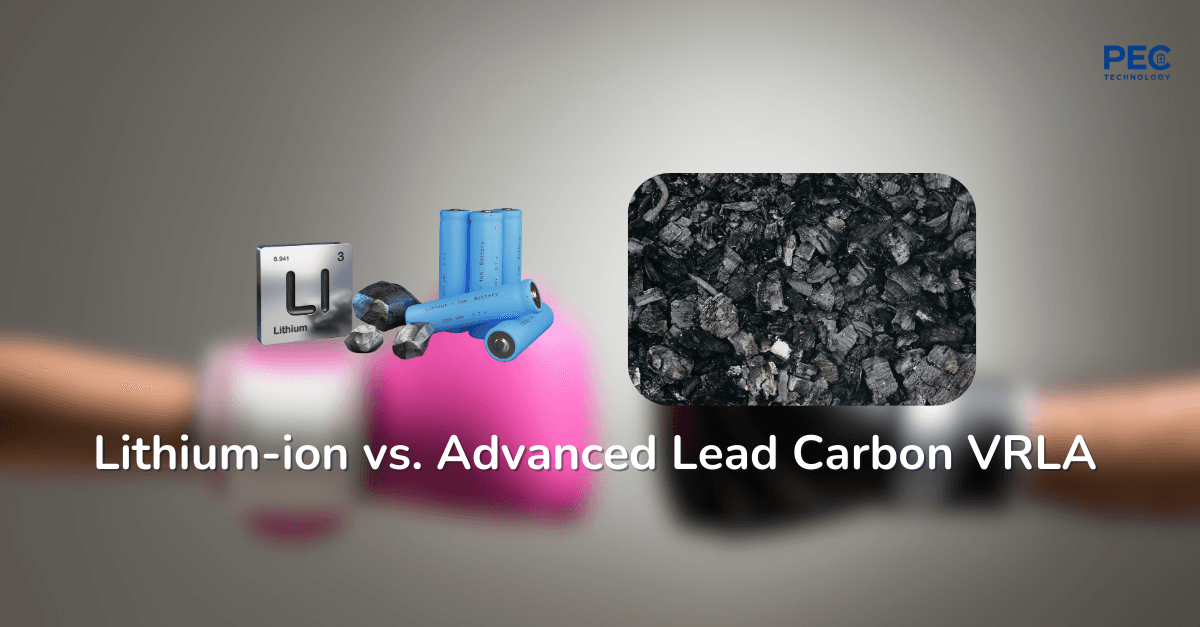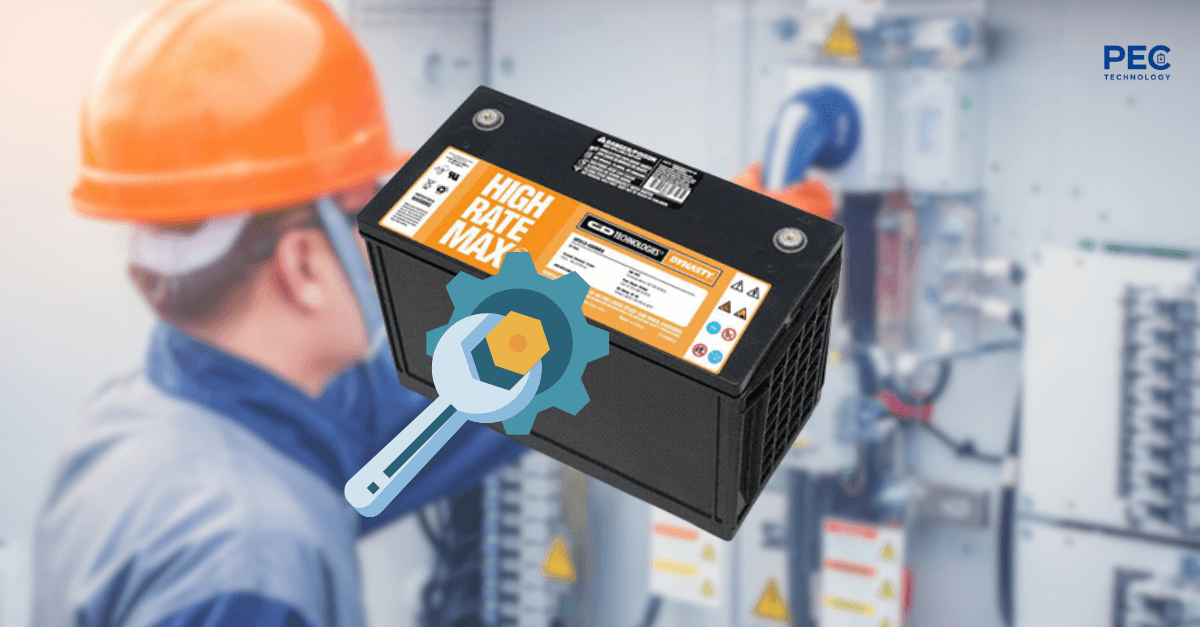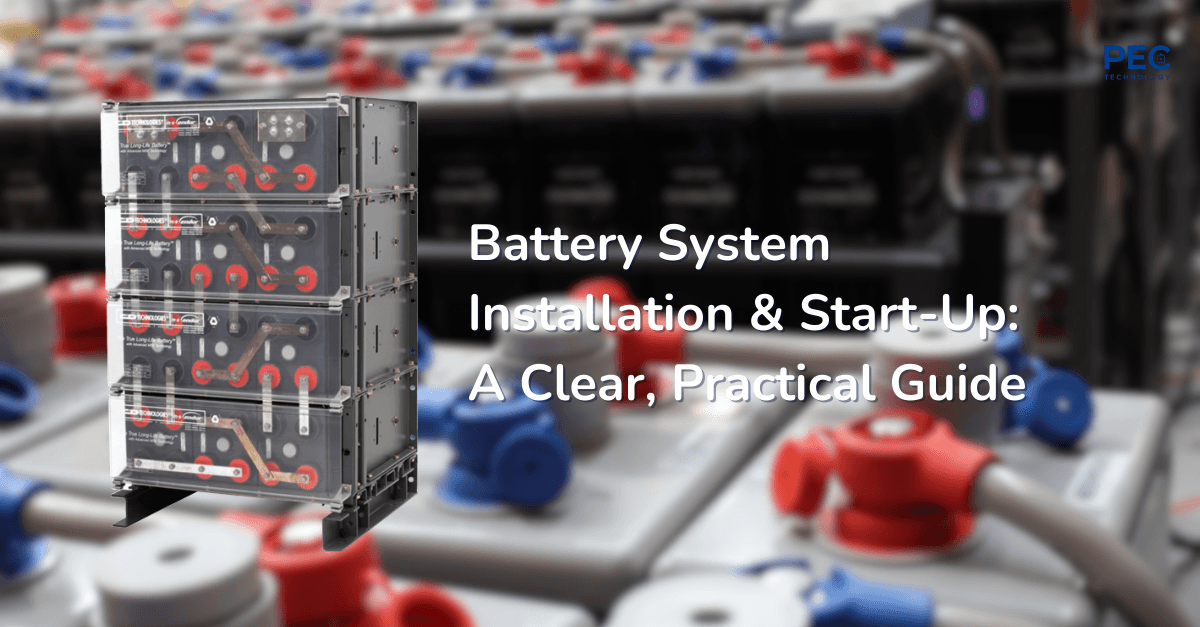Lead-Acid Battery Fundamentals: How They Work, Types, and Lifespan
Lead-acid batteries are one of the oldest and most widely used types of rechargeable batteries. From starting your car to providing backup power for critical systems like telecommunications and data centers, these batteries are a cornerstone of modern technology. This article provides a fundamental understanding of their chemistry, structure, various types, and key performance characteristics.
A lead-acid battery generates electricity through a reversible chemical reaction. Understanding its basic components and processes is key to appreciating its function.
A single lead-acid battery cell consists of three primary active materials:
- Positive Plate: Made of Lead Dioxide ($PbO_{2}$), which is reddish-brown.
- Negative Plate: Made of Sponge Lead (Pb), which is a gray metallic color.
- Electrolyte: A solution of sulfuric acid ($H_{2}SO_{4}$) and water ($H_{2}O$). The specific gravity (SG) of the electrolyte, which indicates its concentration, typically ranges from 1.210 to 1.300 depending on the battery's design.
A standard cell has a nominal voltage of approximately 2 volts.
The process of storing and releasing energy is governed by a reversible electrochemical reaction.
Discharge Process:
During discharge, the sulfuric acid in the electrolyte reacts with the active materials on the positive and negative plates. This reaction forms lead sulfate ($PbSO_{4}$) on both plates and produces water. As water is produced, the concentration of the sulfuric acid decreases, causing the specific gravity of the electrolyte to drop. The overall chemical reaction is:
$$ PbO_{2} + Pb + 2H_{2}SO_{4} \rightarrow PbSO_{4} + PbSO_{4} + 2H_{2}O $$
Charging Process:
To recharge the battery, an external electrical current is applied, reversing the discharge process. The lead sulfate on the plates is converted back into lead dioxide and sponge lead, and the water is consumed to reform sulfuric acid. This increases the electrolyte's concentration and restores the battery's ability to supply power.
$$ PbSO_{4} + PbSO_{4} + 2H_{2}O \rightarrow PbO_{2} + Pb + 2H_{2}SO_{4} $$
Lead-acid batteries are frequently used in standby or float applications, where they are continuously charged and ready to provide power instantly if the main AC power fails. This is critical for:
- Uninterruptible Power Supply (UPS): Providing backup power for computers and data centers.
- Telecommunications: Powering systems that require a constant 48V supply.
- Switchgear and Control: Ensuring control systems in power utilities remain operational (typically 110V).
- Emergency Lighting: Powering lights in case of an outage (12V, 24V).
Lead-acid batteries can be classified based on several key design features:
- Plate Structure:
- Flat Plate: Both positive and negative plates are flat grids.
- Tubular Plate: The positive plate consists of a series of tubes, while the negative plate is flat.
- Grid Alloy: The lead grid is often mixed with other metals (alloys) like Calcium or Antimony to improve strength and reduce corrosion.
- Electrolyte Type:
- Flooded (VLA): The electrolyte is a free-flowing liquid.
- Valve Regulated Lead-Acid (VRLA): The electrolyte is immobilized.
- AGM (Absorbent Glass Mat): The electrolyte is absorbed in a fiberglass mat separator.
- Gelled: The sulfuric acid is mixed with silica to form a gel-like substance.
The grid is a crucial component that serves two main functions:
- It provides a structural framework to hold the active material ($PbO_{2}$ or Pb).
- It acts as a conductor for the electrical current generated by the chemical reaction.
Pure lead is too soft for manufacturing durable grids, so it is alloyed with other metals like antimony, calcium, tin, or selenium to increase its strength and resistance to corrosion.
- Pasted Flat Plate:
- Description: Both positive and negative plates are flat. This is the most common design.
- Properties: Excellent high-current discharge capability and high energy density.
- Applications: Ideal for standby applications such as UPS, telecommunications, engine starters, and emergency lighting.
- Tubular Plate:
- Description: The positive plate is a series of tubes filled with active material, while the negative plate is a pasted flat plate.
- Properties: Very robust structure, making it suitable for applications with frequent charge-discharge cycles (cycling use). It has a moderate current delivery capability.
- Applications: Used in both cycling (electric vehicles, forklifts, solar systems) and standby (telecom, utility) applications.
- Flooded (Vented Lead-Acid - VLA):
- Also known as "wet cell" batteries.
- The electrolyte is a liquid that can flow freely.
- Features open vents that release gases directly into the atmosphere.
- Requires periodic maintenance, specifically the addition of distilled water to compensate for water loss due to electrolysis (the breakdown of water into hydrogen and oxygen gas).
- Valve Regulated Lead-Acid (VRLA):
- Also known as Sealed Lead-Acid (SLA) or Maintenance-Free (MF) batteries.
- The electrolyte is immobilized, either in an AGM separator or as a gel.
- Equipped with a one-way pressure relief valve that contains the gases produced during charging.
- Designed for oxygen recombination, where over 99% of the oxygen gas generated at the positive plate recombines with hydrogen at the negative plate to form water. This minimizes water loss, eliminating the need for regular watering.
- AGM (Absorbent Glass Mat): The electrolyte is held within a highly porous glass fiber mat. This design offers very low internal resistance, making it perfect for high-current applications like UPS systems. They are generally smaller and lighter than flooded or gelled batteries of similar capacity.
- Gelled Electrolyte: Sulfuric acid is mixed with fumed silica, creating a thick, gel-like electrolyte. Gelled batteries are very durable, perform well at high temperatures, and are well-suited for deep, regular discharge cycles, such as in solar power systems and electric vehicles.
Battery capacity is typically measured in Ampere-hours (Ah). It represents the total charge a battery can deliver at a constant current over a specific period.
$$ Ah = Current (Amperes) \times Time (hours) $$
Capacity depends on the discharge rate, end-of-discharge voltage, and temperature. Therefore, it is often specified as a $C_$ rating, where 'r' is the discharge time in hours.
For example, a 1000 Ah @ 10h to 1.8V @ 25°C battery can deliver 100 Amperes for 10 hours until its voltage drops to 1.8V, under an operating temperature of 25°C.
- Discharge Rate: A battery's available capacity decreases as the discharge rate (current) increases. A 100 Ah battery might provide 5A for 20 hours (100 Ah), but if you draw 162A, it may only last for 15 minutes, delivering just 40.5 Ah.
- Temperature:
- Higher temperatures increase battery capacity.
- Lower temperatures decrease battery capacity.
- The standard rating temperature is typically 25°C (77°F). At 0°C, the capacity may drop to around 80-85%, while at -20°C, it could be as low as 60%.
A battery is considered to have reached the end of its life when its capacity falls below 80% of its rated value.
- Design Life: This is the lifespan (e.g., 5, 10, or 20 years) that a manufacturer expects under ideal laboratory conditions (e.g., at 25°C). It is determined through accelerated life testing at high temperatures.
- Service Life: This is the actual life of the battery in a real-world application. It is often shorter than the design life due to factors like operating temperature, maintenance, and usage patterns.
- Temperature: This is the most significant factor. The ideal operating temperature is 20-25°C. A general rule is that for every 8.3°C increase in average operating temperature, the battery's service life is halved. The following formula can estimate the actual life ($L_$):
$$ L_ = L_ \times 2^{\frac{(T_-T_)}{8.3}} $$
Where:
- $L_$ = Design life at temperature $T_$
- $T_$ = Actual operating temperature
- Cycle Life & Depth of Discharge (DOD):
- DOD is the percentage of capacity that has been discharged from the battery.
$$ % DOD = \frac{Ah_}{Ah_} \times 100 $$
- The deeper the discharge in each cycle, the fewer cycles the battery can withstand before it fails. For example, a battery might last for 1200 cycles at 20% DOD but only 200 cycles at 90% DOD.
- Other Factors:
- Internal: Grid alloy type, plate thickness, and separator technology.
- External: Charging voltage and current, ripple current, and maintenance quality.
- Single Cell: A 2V battery unit. Large capacity batteries (>200Ah) are often supplied as single cells.
- Monoblock: Multiple cells connected in series inside a single casing to create a higher voltage battery (e.g., a 12V monoblock contains 6 cells).
- Series Connection: Connects batteries positive-to-negative. Voltage adds up, while capacity (Ah) remains the same.
- Parallel Connection: Connects batteries positive-to-positive and negative-to-negative. Capacity adds up, while voltage remains the same.
- Series-Parallel Connection: A combination of both is used to achieve a desired system voltage and capacity.











